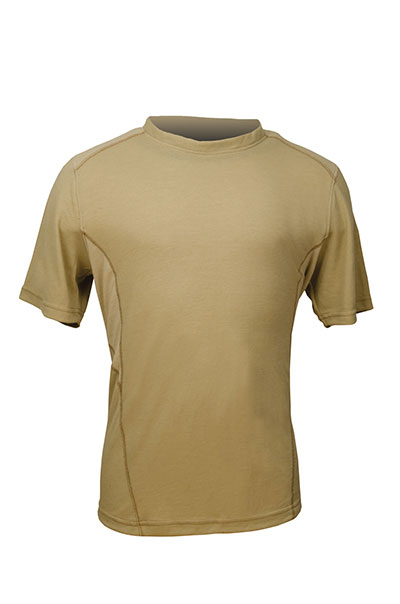
Equipment
Techsmart: Comfort Factor
All firefighters know what it’s like to feel cold and damp, or hot and sweaty, after a long incident. That level of discomfort can take a toll on your body – especially if you find yourself facing climate extremes, day after day after day.
September 9, 2013
By Olivia D’Orazio
All firefighters know what it’s like to feel cold and damp, or hot and sweaty, after a long incident. That level of discomfort can take a toll on your body – especially if you find yourself facing climate extremes, day after day after day.
 |
|
| This Power Dry T-shirt by Dragonwear features the company’s moisture-wicking technology, as well as a flat lock stitch, which provides a flat seam and better stretch and comfort.
|
Fabrics that are commonly used in station wear – cotton, fleece or polyester – offer little protection against the elements – wind, rain, snow, sleet. As Canadian firefighters, you need
that protection.
Assistant Fire Chief Kirk Hughes knows this all too well. He works in Déline, in the Arctic Circle, where temperatures hover around -25 C in the winter. In the January issue of Canadian Firefighter and EMS Quarterly, Hughes wrote: “A cold firefighter exhausts more quickly, and rapidly becomes ineffective when the temperature bottoms out.”
Nowadays, many firefighters have taken to wearing athletic products, such as Under Armor or similar moisture-wicking fabrics, under their station wear to keep them comfortable during training or on calls.
Fire Fighting in Canada columnist Mark van der Feyst is a firefighter in Woodstock, Ont., and a trainer. He explains the shortcomings of traditional station wear.
“Normally, we’re not supposed to wear anything synthetic,” he says. “We should wear only natural fibres – something fire resistant and that can breathe. Nomex is fire resistant, but it’s not very breathable. Cotton, though, can breathe, but it isn’t fire resistant.”
At least one firefighting gear maker has taken note and is producing flame-resistant, moisture-wicking products specifically for firefighters. True North has developed its Dragonwear line of station wear and undergarments to help mitigate the issues that myriad Canadian elements can cause.
Simon Levin, sales manager for Dragonwear, says that many firefighters don’t realize that cotton, which is a commonly used fabric in station wear, is not the best material to keep next to your skin.
“Cotton is one of the most absorbent fibres – it can absorb one to two times its weight – but it doesn’t dry,” he explains.
“So you often have firefighters running into fires and sweating and feeling that sweat heat up, or firefighters getting heat exhaustion because of the wet undergarments, or firefighters coming out of the building and having to take off their gear and freezing because their clothes are wet.”
Being dry and warm has less to do with comfort and more to do with safety, Levin says.
“When your core is wet, you have no ability to be warm,” he says. “When you’re not out there worried about being cold, you’re level of concentration is better and your chance of getting hurt is much lower.”
But protection against moisture is not the only function of the Dragonwear product line. The company also produces a series of outerwear products made of strong fleece to keep firefighters warm.
“Ninety-five per cent of our fabrics come out of a mill in Boston, called Polartec, which actually invented fleece,” Levin explains.
Polartec’s patented fabric, which is present in all Dragonwear products, consists of a modacrylic-lenzing-rayon blend. The next-to-skin layer of the fabric is hydrophobic; it transfers liquid, including water and sweat, from the skin onto the hydrophilic face of the fabric. The liquid then spreads across the surface of the fabric, which makes it much easier for the liquid to evaporate and dry as quickly as possible.
“Where the technology gets interesting is that it’s not a chemical application. It’s inherent in the way the fabric is knit,” Levin says.
“So no matter how or how many times you wash it, it will perform that way for the life of the garment.
“Then, as a bonus, it is also a fire retardant next-to-skin layer, with comfort and this technology in it. It becomes a garment that you really can’t do without.”
For more information, visit www.dragonwear.com .
Print this page